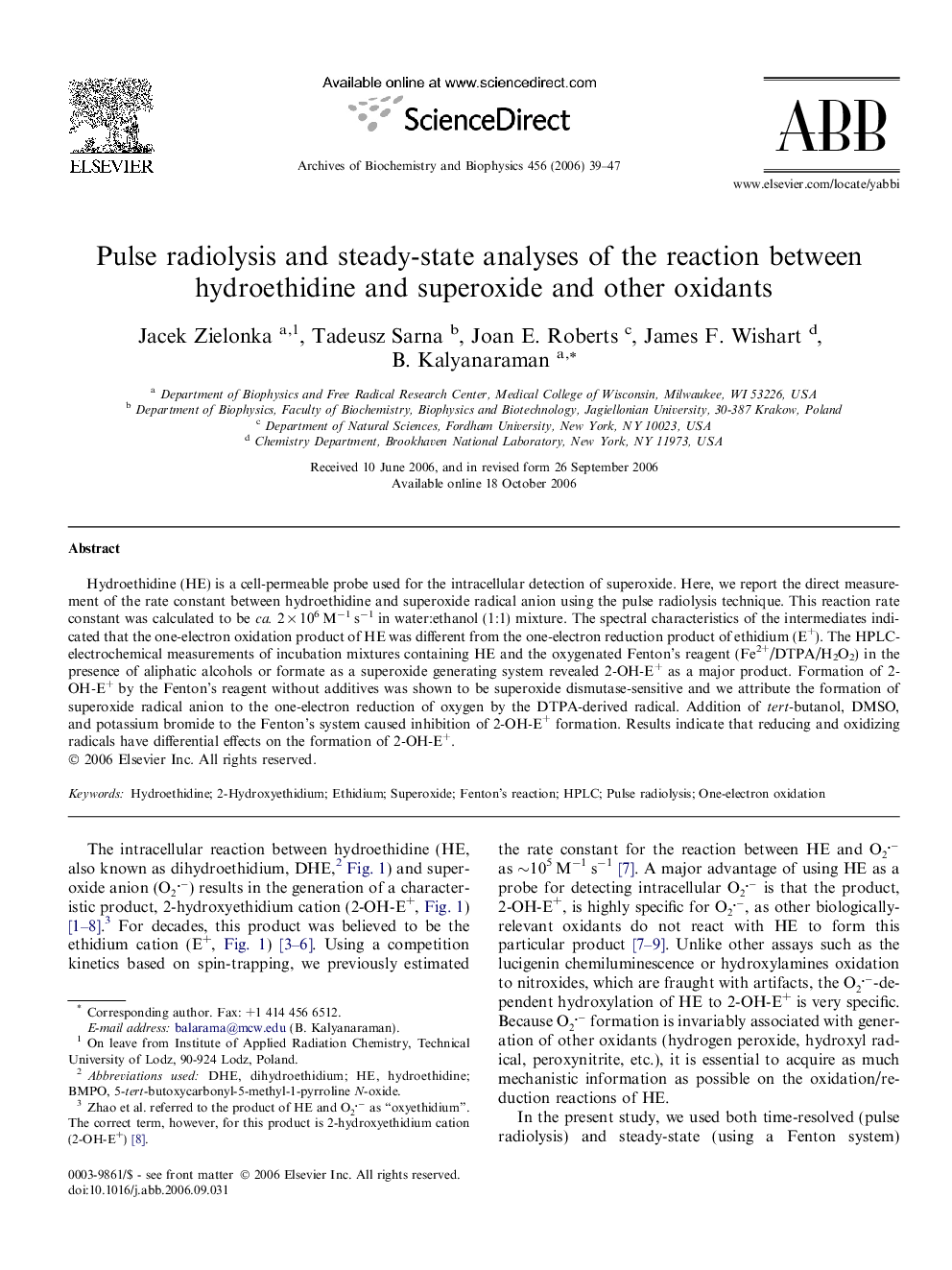| Article ID | Journal | Published Year | Pages | File Type |
|---|---|---|---|---|
| 1927386 | Archives of Biochemistry and Biophysics | 2006 | 9 Pages |
Hydroethidine (HE) is a cell-permeable probe used for the intracellular detection of superoxide. Here, we report the direct measurement of the rate constant between hydroethidine and superoxide radical anion using the pulse radiolysis technique. This reaction rate constant was calculated to be ca. 2 × 106 M−1 s−1 in water:ethanol (1:1) mixture. The spectral characteristics of the intermediates indicated that the one-electron oxidation product of HE was different from the one-electron reduction product of ethidium (E+). The HPLC-electrochemical measurements of incubation mixtures containing HE and the oxygenated Fenton’s reagent (Fe2+/DTPA/H2O2) in the presence of aliphatic alcohols or formate as a superoxide generating system revealed 2-OH-E+ as a major product. Formation of 2-OH-E+ by the Fenton’s reagent without additives was shown to be superoxide dismutase-sensitive and we attribute the formation of superoxide radical anion to the one-electron reduction of oxygen by the DTPA-derived radical. Addition of tert-butanol, DMSO, and potassium bromide to the Fenton’s system caused inhibition of 2-OH-E+ formation. Results indicate that reducing and oxidizing radicals have differential effects on the formation of 2-OH-E+.
